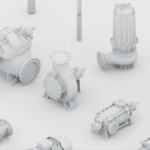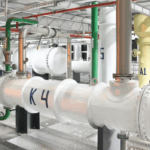One of the most important parts of the beer life cycle is fermentation.
Fermentation, or the fermentation of wort, is the second stage in the beer production cycle, following the first - brewing. It is essentially the conversion of sugars into alcohol and carbon dioxide. Fermentation is possible due to the metabolism of the brewer's yeast involved in fermentation. The process is as follows: after boiling, the wort is pumped from the brewhouse to the fermentation vessels, where it is cooled to the required temperature. After that, brewer's yeast is added to the vessel.
It should be noted that during the fermentation stage it is important to determine the degree of fermentation (conversion of a certain part of the sugars in beer) and interrupt it in time to produce what is known as young or green beer. The type of yeast and the fermentation temperature determine the fermentation technology and the final beer grade.
LOWER BIRTH
The bulk of beer produced by breweries around the world is produced using bottom fermentation technology. For beer to have a traditional taste, the brown foam must be removed at the last stage of fermentation. Initially, open-type vats were used for this purpose. However, in modern realities, breweries are now also using CCTs in the recipe of varieties: tanks are more economical and allow for a faster brewing process.
TOP FERMENTATION
The top fermentation of the wort is carried out with the participation of the Sacckaromyces pastorianus yeast. These are traditional Ale, Stout, Altbier, Porter, Trappist, and wheat beers. The top fermentation lasts less - from 3 to 9 days, and the temperature regime is higher - 15-24°C.
During the fermentation foam appears on the surface of the container: it is formed due to excess carbon dioxide and active activity of yeast. The fermentation of beer in the CCT is the optimal method of brewing, which avoids foam contamination by foreign pollutants. In addition, the use of a closed container makes it possible to carry out controlled fermentation and maturation in one tank, without the need for overflow.
Modern technical processes, storage and bottling systems can provide consumers with impeccable beer and help you run your business successfully.
To find out more about what equipment you can use to achieve the right fermentation in your brewery, give us a call: +38 (044) 390 73 38 and we will offer a reliable solution.
We guarantee our customers professional advice, timely execution, and qualified after-sales service.



